What is the history of the Mamian skirt?

The Mamian skirt history is a captivating tale of elegance, craftsmanship, and cultural depth woven into Chinese traditional clothing. Known as the “horse-face skirt,” the Mamian skirt (Mamian qun) is a hallmark of Hanfu, featuring four overlapping panels with pleated sides and symbolic designs. From its origins in ancient China to its prominence in the Ming and Qing dynasties, this iconic hanfu skirt reflects the artistry and values of Mamian skirt culture. Here are five fascinating facts about its evolution and enduring legacy.
Traditional Mamian Skirt
1. Meaning
The Mamian skirt (Mamian qun, horse-face skirt), also called the “pleated horse-face skirt,” is a signature style of Han Chinese women’s traditional clothing. It features four skirt panels—two front and two back—that overlap in pairs. The outer panels are richly decorated, while the inner ones are plainer or unadorned. Pleats grace the sides, and the waistband, often white fabric symbolizing lifelong love, is tied with ropes or buttons.

The Mamian skirt is the quintessential women’s style of the Ming and Qing dynasties. Its vibe evolved from the Ming’s fresh and elegant charm to the Qing’s lavish opulence, then to the Republic era’s simple grace. Through all these changes, the iconic “horse-face” structure stayed rock-solid, a timeless hallmark of Chinese fashion.
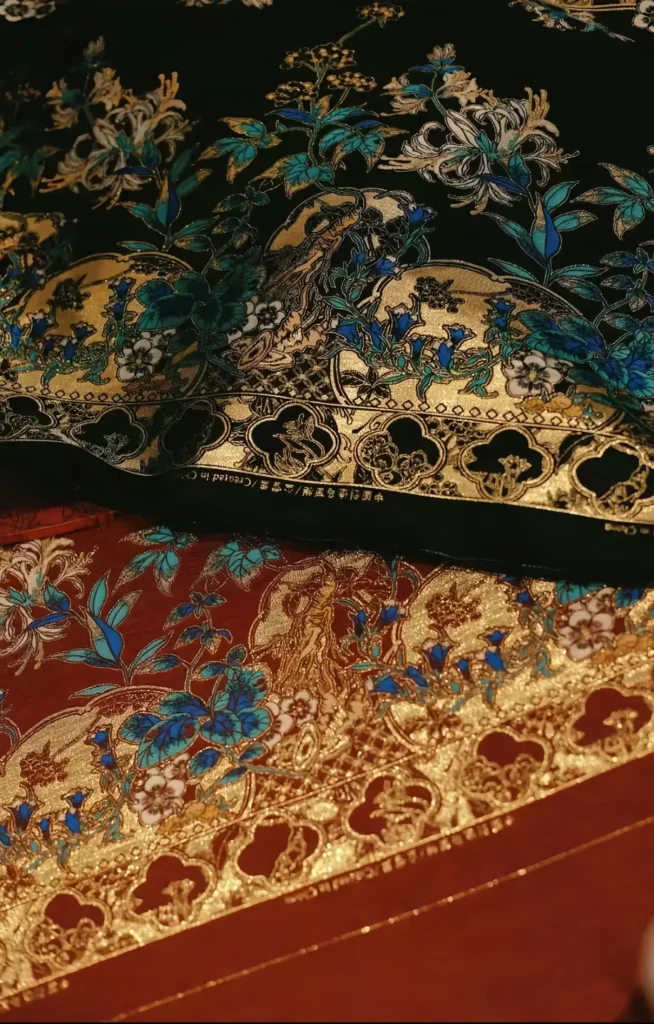
2. The Origins of Mamian Skirt History
The term “Mamian” (horse-face) first popped up in the Ming Palace History: “The yesa has an unbroken back hem, swings on both sides, two front panels, and horse-face pleats extending outward.” The yesa traces back to the Yuan dynasty’s zhisun fu (robe-skirt combo), designed with a connected top and skirt, long past the knees, wide hem, and finely pleated waist for horseback riding. Some argue the Mamian skirt’s roots go even further, to the Song and Liao dynasties, where skirts already showed Mamian-like panel designs.
Artifacts like a Song dynasty maid figurine from Shanxi’s Jinci Temple show early Mamian-like designs. By the Yuan dynasty, the zhisun fu robe-skirt introduced pleated waistbands, setting the stage for the Mamian skirt history to flourish in the Ming dynasty.
In the Song dynasty, the xuan qun (swirling skirt) was a practical “split-crotch” style for riding donkeys. Scholar Meng Hui notes in The Split Skirt: “This Song skirt was made of two equal, separate panels, partially overlapped and sewn to the waistband.” Artifacts, like a Song dynasty maid figurine from Shanxi’s Jinci Temple, hint at early Mamian skirt shapes.
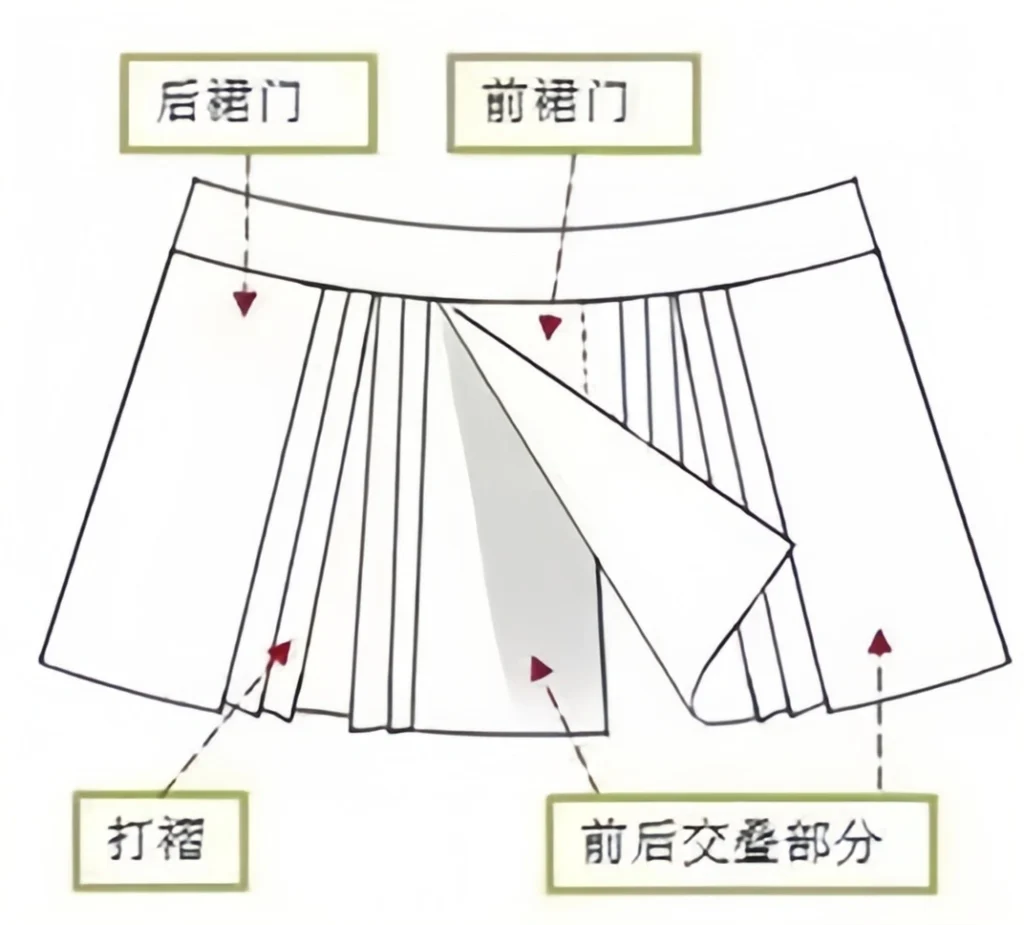
In the Ming dynasty, the Mamian skirt became a women’s fashion star, known for its focus on pleats and decorative hem bands (lan gan). It was the era’s most popular and iconic skirt, as recorded in the Jiajing Taikang County Annals: “During the Hongzhi era, women’s tops barely covered the skirt waist; the wealthy used silk, satin, gauze, or brocade with gold-embroidered knee bands, and high buns. By the Zhengde era, tops grew larger, skirt pleats multiplied, and gold patches adorned tops. Early Jiajing saw knee-length tops and shorter, less pleated skirts…” The Ming painting Emperor Xianzong’s Lantern Festival Revelry shows empresses rocking Mamian skirts in vibrant glory.
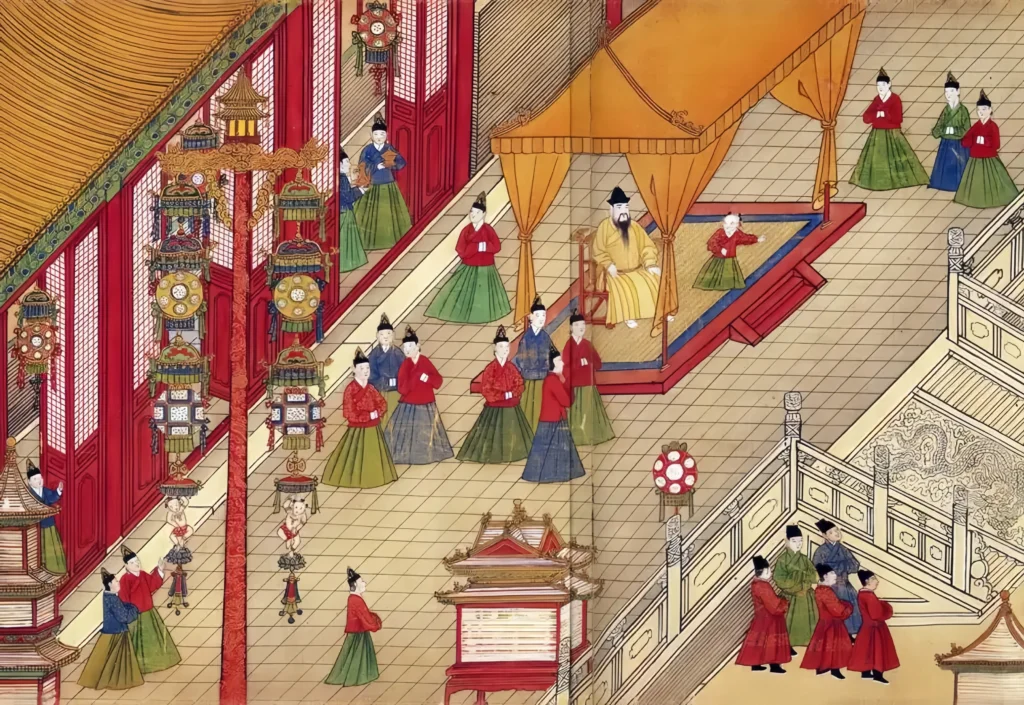
3. Development
Song to Ming Dynasty
Mamian Skirt
The Song dynasty’s swirling skirt evolved into the Mamian skirt by the Ming dynasty. During the Chenghua era, everyone in the capital—queens to commoners—loved Mamian skirts. Though not yet called “Mamian skirt,” the style was simple, undefined, with soft colors and a fresh, elegant feel. Fabrics, decorations, and colors varied strictly by social class.
Ming to Qing Dynasty
Mamian Skirt
In the Qing dynasty, the Mamian skirt built on Ming designs, becoming the go-to daily wear for Han Chinese women and their signature style. It developed a unique decorative structure, setting the standard for Qing skirts with intricate details and bold flair.
Qing to Republic Era
Mamian Skirt
After the Qing dynasty’s fall, early Republic-era Mamian skirts carried forward Qing’s loose fit, bright colors, and complex craftsmanship. But as times changed, the style simplified, shedding its opulence for a humbler, fading elegance.
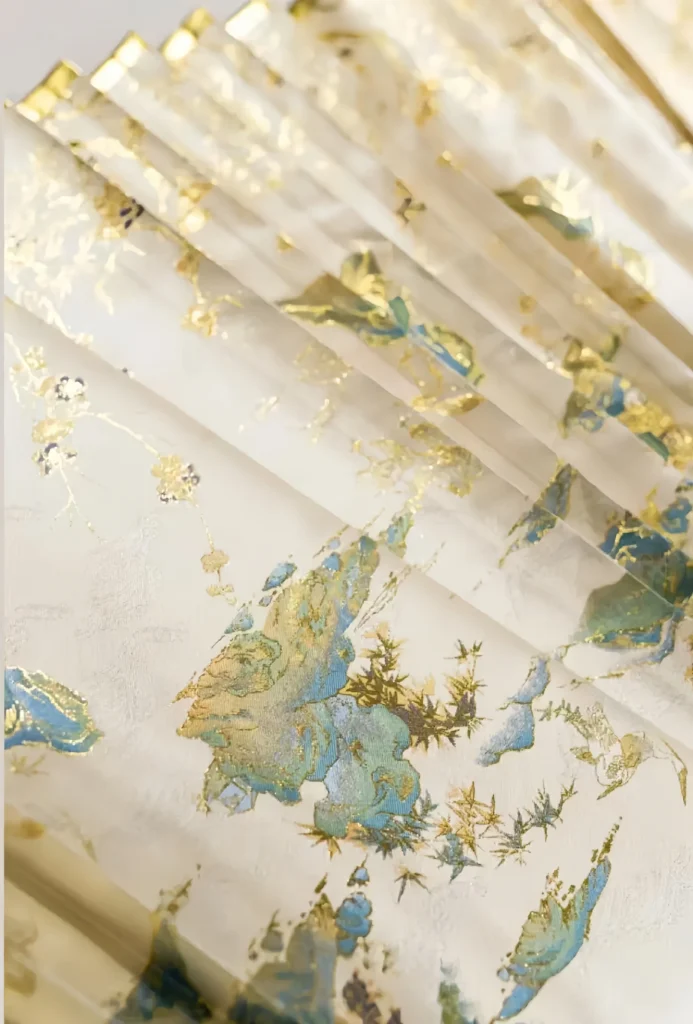
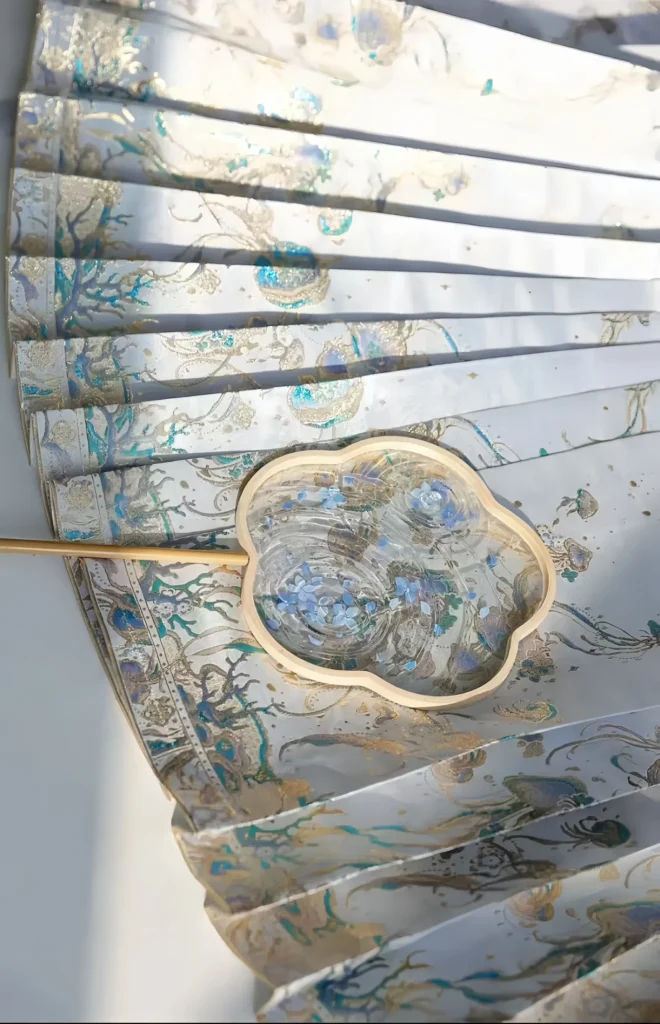
4. Craftsmanship
Choosing Fabrics
Mamian skirt panels are typically made of silk or satin, varying by style. Pleated skirts need elastic, durable fabrics for shaping, like dark-patterned silk for intricate styles such as the fish-scale pleated skirt, which uses silk threads to connect seams. Hem-band styles favor satin for bold, smooth surfaces. Most Mamian skirts have silk linings, though summer versions often skip them for breathability.
You can check out various fabrics for making Hanfu here, including those for Ma Mian skirts, to dive deeper into the details.
Cutting
Traditional Mamian skirts use a flat, wrap-around structure. Narrow historical fabric widths required multiple panels to achieve pleat volume, but modern wider fabrics meet needs with a single panel.
Sewing
Two pleated skirt panels overlap at the front and back, fixed only at the waistline. The waistband and ties are sewn on, with pleats secured by waist stitches, leaving lower pleats free-flowing.
Ironing and Finishing
A final press, and voilà—a Mamian skirt is ready to shine!
Hanfu craftsmanship includes many techniques, with the Ma Mian skirt being just one unique style.
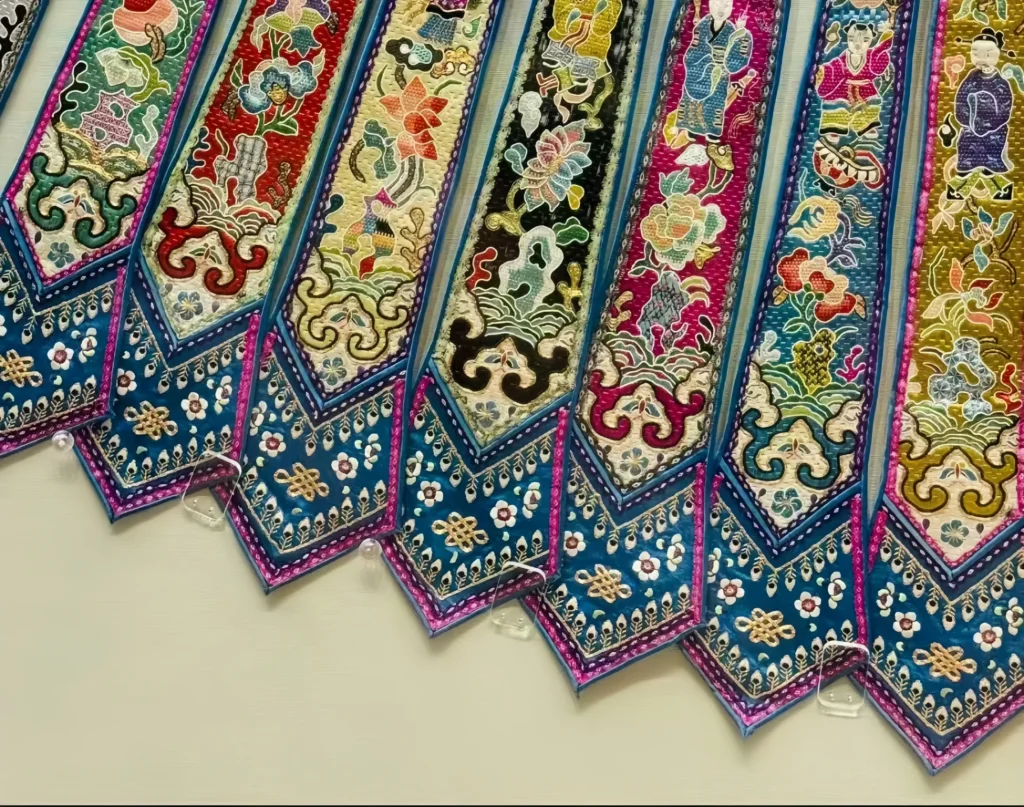
5. Cultural Significance
Every pattern on a Mamian skirt carries meaning. Animal motifs, like dragon and phoenix, are tied to Chinese heritage, often gracing imperial robes. Dragons and phoenixes also symbolize romantic love. Fish, sounding like “surplus” (yu), promise abundance. Floral motifs reflect virtues: peonies (China’s national flower) for wealth, lotuses for purity, chrysanthemums for longevity, and lilies for sacredness, friendship, and marital harmony.
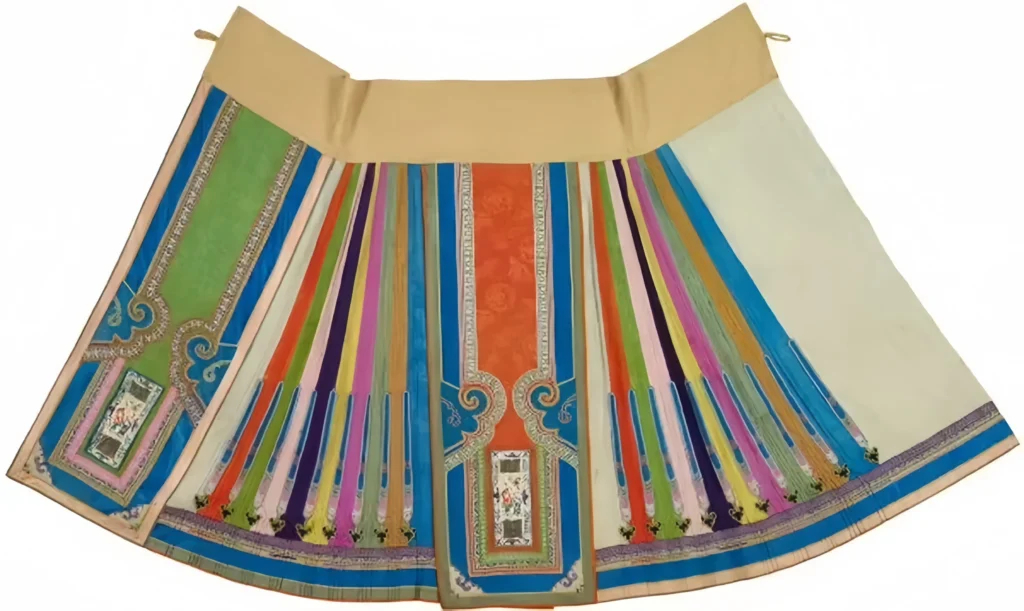

Mamian skirts burst with vibrant colors, especially red, a Chinese favorite for luck and joy, perfect for weddings and festivals per Han traditions. Blue was a Qing trend, often paired with black or yellow for a striking look.
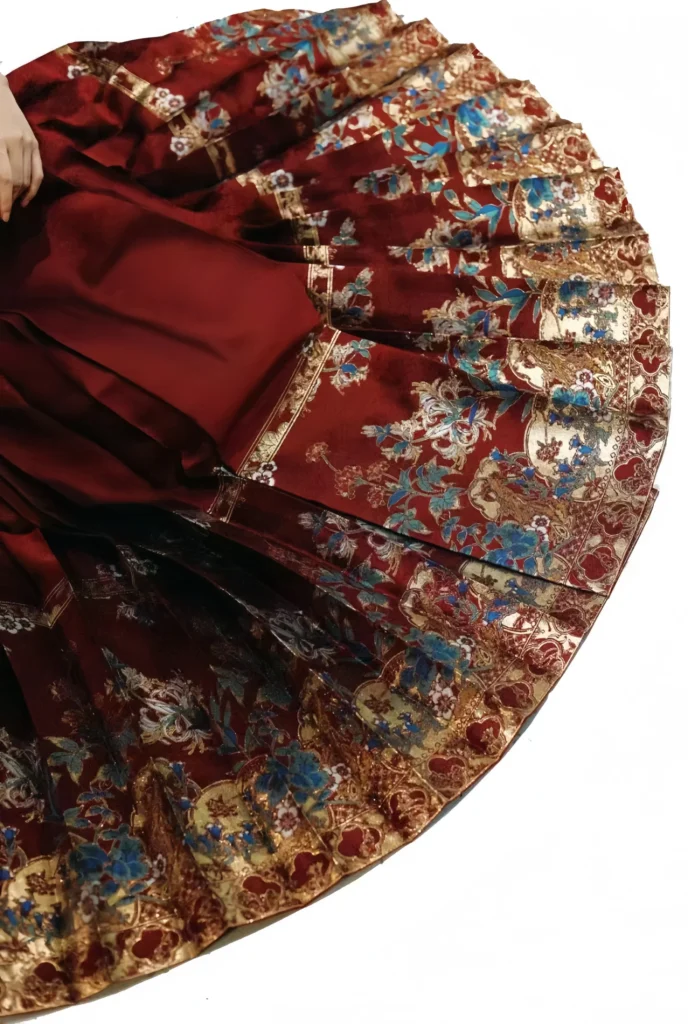
Tips for Embracing Mamian Skirt in Modern Hanfu Styling
To incorporate the Mamian skirt into modern hanfu skirt styling while respecting Mamian skirt culture, consider these tips:
- Choose Authentic Fabrics: Opt for silk or satin skirts to reflect traditional craftsmanship, available from artisans on platforms like Etsy.
- Pair with Hanfu Tops: Match with Ming-style short tops or Qing-inspired jackets for a cohesive look.
- Understand Symbolism: Select patterns like peonies or dragons to honor cultural meanings.
- Respect the Context: Wear Mamian skirts for cultural events or photoshoots, avoiding casual misuse.
Conclusion: The Timeless Legacy of Mamian Skirt History
The Mamian skirt history is a journey through centuries of artistry, from Song dynasty origins to Ming and Qing dynasty elegance, and into the Republic era’s simplicity. As a cornerstone of Ming dynasty fashion and Mamian skirt culture, this hanfu skirt carries profound symbolism through its patterns and colors. By wearing it with respect and knowledge, modern hanfu enthusiasts keep the legacy of Chinese traditional clothing alive, honoring its timeless beauty.
Want to explore Chinese traditional clothing beyond the Ma Mian skirt? Click here to learn more about other Hanfu styles: Top 40 Traditional Chinese Clothing in History


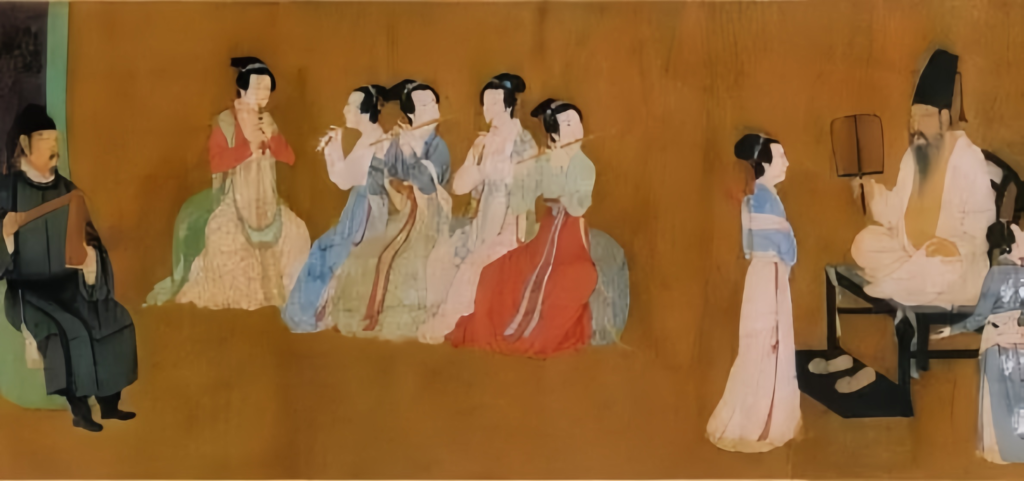


Responses